
Baron de Ros of Helmsley is the premier baron in the Peerage of England, created in 1288/89 for William de Ros, with precedence to 24 December 1264. Premier baron is a designation and status awarded to the holder of the most ancient extant barony of the Peerage of England. Before the Dissolution of the Monasteries the Prior of the Order of St John in England was deemed the premier baron.

Baron Zouche is a title which has been created three times, all in the Peerage of England.

Baron Berners is a barony created by writ in the Peerage of England.

Baron Saye and Sele is a title in the Peerage of England held by the Twisleton-Wykeham-Fiennes family. The title dates to 1447 but it was recreated in 1603. Confusion over the details of the 15th-century title has led to conflicting order for titleholders; authorities such as Burke's Peerage and Debrett's Peerage do not agree on whether or not the 1447 creation is still extant.

Sir Francis Godschall Johnson was a Canadian office holder. He was appointed Lieutenant Governor of Manitoba on April 9, 1872, but had his commission revoked before he was sworn in. In 1889, he was appointed the 4th chief justice of the Superior Court of Quebec.
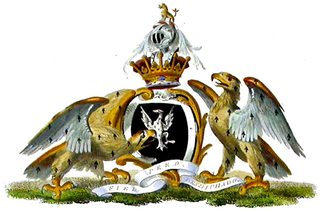
Earl of the Isle of Thanet, in practice shortened to Earl of Thanet, was a title in the Peerage of England. It was created in 1628 for Nicholas Tufton, 1st Baron Tufton. He had already succeeded as second Baronet of Hothfield in 1631 and been created Baron Tufton, of Tufton in the County of Sussex, in 1626, also in the Peerage of England. The Baronetcy, of Hothfield in the County of Kent, was created in the Baronetage of England in 1611 for his father, John Tufton. Lord Thanet was succeeded by his son, the second Earl. He married Lady Margaret Sackville, daughter of Richard Sackville, 3rd Earl of Dorset and Lady Anne Clifford. Their son, the third Earl, successfully claimed the barony of de Clifford through his maternal grandmother Lady Anne.

The Frankland Baronetcy, of Thirkelby in the County of York, is a title in the Baronetage of England, created on 24 December 1660 for William Frankland. He later represented Thirsk in Parliament.
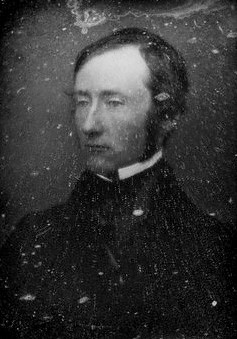
Robert Curzon, 14th Baron Zouche, styled The Honourable Robert Curzon between 1829 and 1870, was an English traveller, diplomat and author, active in the Near East. He was responsible for acquiring several important and late Biblical manuscripts from Eastern Orthodox monasteries.

The Mostyn baronets are two lines of Welsh baronets holding baronetcies created in 1660 and 1670, both in the Baronetage of England. One creation is extant as of 2015. The two lines are related and both claim descent from Edwin of Tegeingl, an 11th-century lord of Tegeingl, a territory which approximates modern Flintshire.
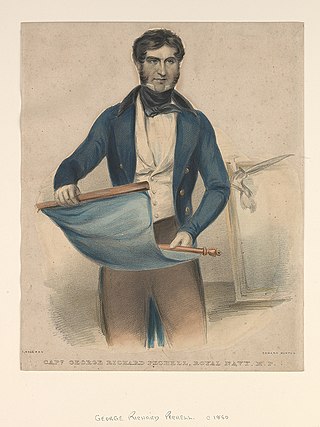
Vice-Admiral Sir George Richard Brooke-Pechell, 4th Baronet, born George Richard Pechell, was a British Royal Navy officer and Whig politician. He was a Member of Parliament (MP) for Brighton for 25 years.

The Honourable Robert Curzon, of Parham Park, Sussex, was a long-standing British Member of Parliament.
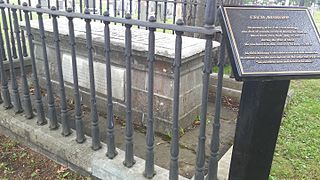
Lieutenant-Colonel Cecil Bisshopp was a British army officer and onetime Member of the Parliament of the United Kingdom who came to Canada in 1812 and died in the War of 1812.
Cecil Bishopp may refer to:
Sir Cecil Bishopp, 4th Baronet was an English landowner and politician who sat in the House of Commons from 1662. He was the brother of Sir Thomas Bishopp, 3rd Baronet (1627–1652).
Sir Edward Bishopp, 2nd Baronet was an English politician who sat in the House of Commons in 1626 and in 1640. He supported the Royalist cause in the English Civil War.
Sir Thomas Bishopp, 1st Baronet (1553–1626), also spelt Bishop and Bisshopp, was an English politician.
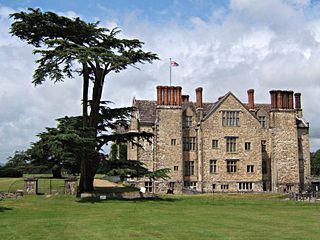
Cecil Bisshopp, 12th Baron Zouche, FRS was a Member of Parliament for New Shoreham who afterwards became the 12th Baron Zouche.
Sir Cecil Bishopp, 6th Baronet, later Bisshopp, was a British politician. He succeeded to the title of 6th Baronet Bishopp, of Parham, co. Sussex on 25 October 1725. He was Member of Parliament for Penryn between 1727 and 1734, having been returned unopposed on the interest of the Boscawen family into which he had married. He also represented Boroughbridge between 1755 and 1768. He married Hon. Anne Boscawen, daughter of Hugh Boscawen, 1st Viscount Falmouth and Charlotte Godfrey, in 1726. In addition to Parham Park, Sussex he was also the owner of a house at 11 Berkeley Square, London which Horace Walpole purchased from Bisshopp's heirs in 1779 and in which Walpole lived until he died there in 1797. Sir Cecil died on 15 June 1778 at the age of 77.
Sir George Bisshopp, 9th Baronet was Sub-Dean of the Chapel Royal, Dublin from 1816 until 1831, and thereafter and Dean of Lismore from 1831 until 1834.

Sir Robert Fagg, 4th Baronet (1704–1740), of Wiston, near Steyning, Sussex, was a British politician who sat in the House of Commons from 1734 to 1740.












